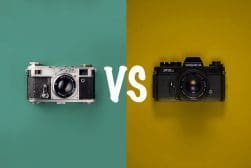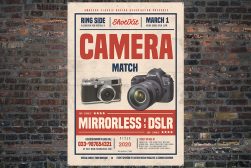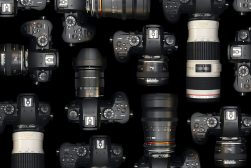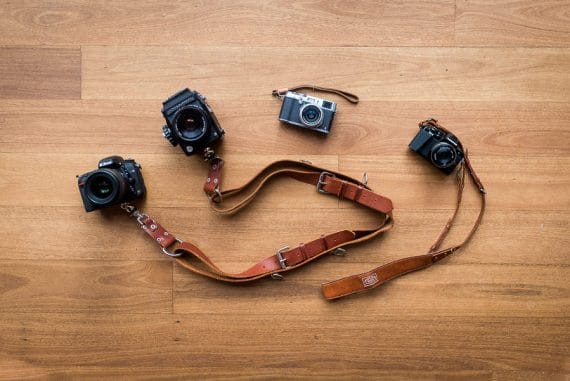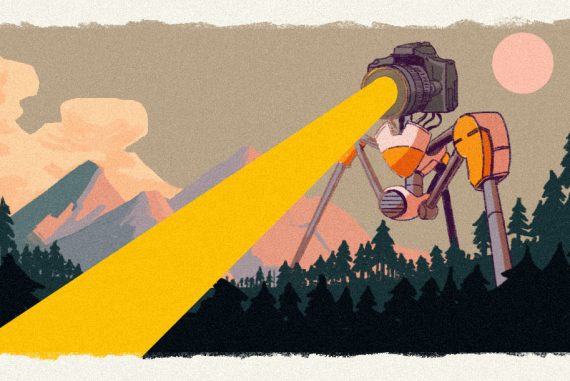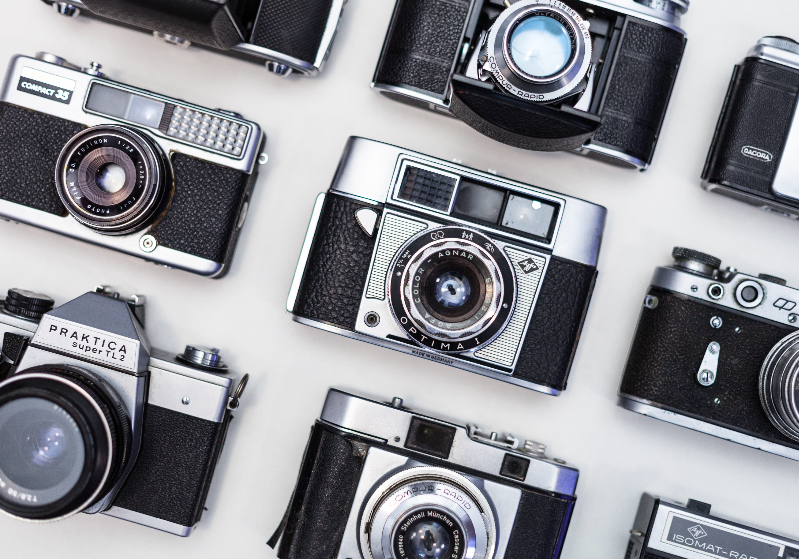
SLR vs DSLR Cameras: 9 Key Differences to Know
Uncover the distinctions between SLR and DSLR cameras, delving into 9 key differences that every photography enthusiast should understand
This is a guide to the differences between SLR vs DSLR cameras, but first, let’s define what each one is.
An SLR (Single-Lens Reflex) camera is an analog camera that uses a mirror and prism system. This allows photographers to focus on the image before it’s recorded on film.
A DSLR (Digital Single-Lens Reflex) camera combines the optics and mechanisms of an SLR camera with a digital imaging sensor allowing photographers to review photos on an LCD screen.
DSLR and SLR cameras both have their place in 2024, but the one that’s right for you depends on your needs.
DSLR vs SLR Cameras: 9 Key Differences
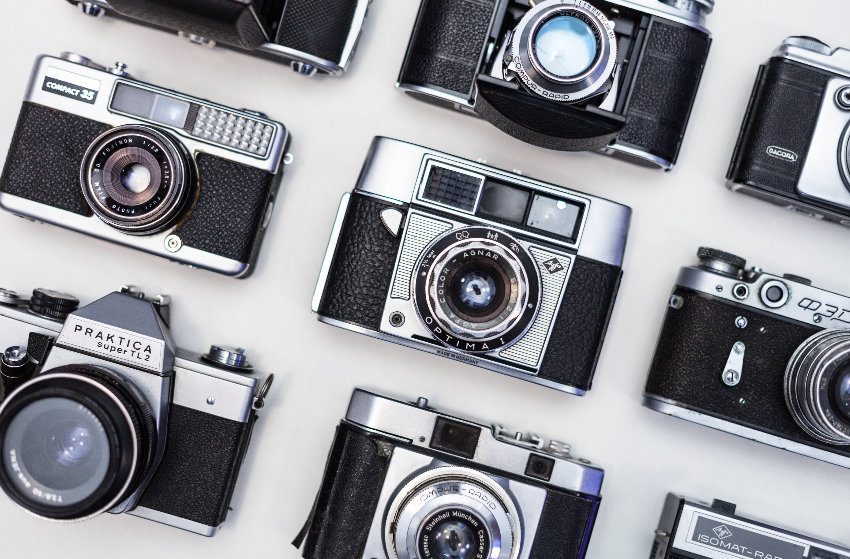
Image: Dan Cristian Pădureț
SLR vs DSLR Memory
A DSLR camera has greater storage capacity. Capable of storing thousands of images and videos on a digital memory card.
Captured images can be deleted at no cost to the photographer.
An SLR camera’s storage capacity is limited to the number of exposures on a roll of film.
Each exposure on a film roll costs money making them less disposable.
SLR vs DSLR Technology
Both the DSLR camera and the SLR camera have rear viewfinders.
The optical viewfinder gives the photographer the same view as the lens sees.
When light passes through the camera lens it will bounce off a prism and mirror to the viewfinder.
Some DSLR cameras give a live digital view through a rear LCD screen.
- Read more: Film vs Digital Photography: Which is Best?
SLR vs DSLR Image Sensor
The DSLR and the SLR camera reflect light onto a mirror so that it can be seen in a viewfinder.
SLR and DSLR cameras record captured light in different ways.
The SLR camera records light using film.
Camera film is a strip of plastic coated in a light reactive emulsion usually made with silver. The image becomes fixed to the photosensitive material.
DSLR cameras use an electronic sensor to capture the light as pixels. This is stored on a memory card.
SLR vs DSLR Lenses
The DSLR and SLR are equal when it comes to lenses. They can both use interchangeable lenses.
Photographers can swap lenses as required depending on the shoot.
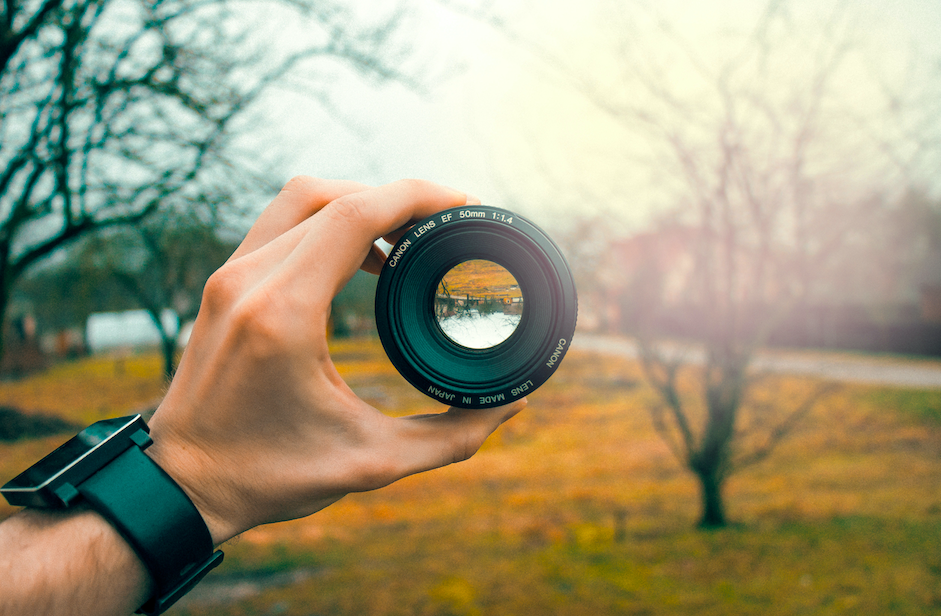
Image: Jonas Svidras
SLR vs DSLR Image Quality
SLR cameras are the winning champion when it comes to picture quality, producing superior results.
Camera film has a higher resolution than even digital cameras with the most pixels per inch.
With advancements in digital technology, DSLR cameras could one day surpass SLR cameras in image quality.
But presently film is the king of pixel output.
SLR vs DSLR Physical
From a glance, the SLR and DSLR cameras look almost identical.
Modern-day SLR and DSLR cameras sport a similar sleek look.
On closer inspection, you will notice the differences. The most notable difference is the rear monitor on the DSLR.
SLR cameras are made using heavier components like metal. This results in SLR cameras being heavier than Digital SLRs.
SLR vs DSLR Video
DSLR cameras can shoot videos and photos, due to the advancement in digital technology and their greater storage capacity.
SLR cameras have neither the space nor the technological aptitude to shoot videos.
SLR vs DSLR Value
A DSLR camera is cheaper to buy than a SLR Camera.
There is more demand for Digital SLR cameras, thus more on the market which brings down manufacturers’ costs.
The advantage of an SLR is it won’t need to be upgraded as technology changes.
SLR cameras have used the same technology and the same size of film for decades.
It is worth remembering that SLR cameras are collectible. They can end up being a good investment.
When developing images taken with an SLR camera there is the extra cost of film, plus the cost of developing the negatives.
Using a Digital SLR camera you will not have to factor in the cost of film.

SLR vs DSLR Photo Developing
A DSLR camera provides immediate results. There is no waiting for the film to develop or for a negative roll to be finished.
Once a photography shoot is finished it is possible to upload the images onto a computer. And bam! There they are ready to print.
In contrast, an SLR is different. Each exposure on the roll of film will have to be taken before sending it to be developed.
The photos must be developed before viewing. This is a disadvantage, especially if you capture poor-quality images without realizing it on the shoot.
Using an SLR immediacy is not possible and patience is necessary.
Are SLR Cameras Still Worth Buying in 2024?
There are some great reasons to buy SLR over its digital counterpart.
Film still ranks number one when it comes to image quality. Digital hasn’t managed to beat film yet and might not for many more decades.
Digital SLR cameras have made technological leaps and bounds in recent years, but they still have not surpassed film cameras.
The SLR has superior photographic capabilities. They are versatile and can be used for many different photographic projects.
Also, they can be paired with any lens.
What is the biggest advantage of an SLR camera?
The biggest advantage of an SLR camera is superior picture quality, due to the film’s high resolution.
Using this camera a photographer will achieve precision results – results that are not possible when using other cameras.
The film has a higher dynamic range and can capture fine details that are lost when using a digital camera.
An exact focus can be achieved through the lens.
What you see through the viewfinder is exactly what the camera does, and this image will be exposed to the negative.
This means a photographer can always be confident of what they are capturing.
The film leans toward a more natural result as it blends colors better than digital.
If you are serious about photography and want the ultimate in superior results an SLR is for you.
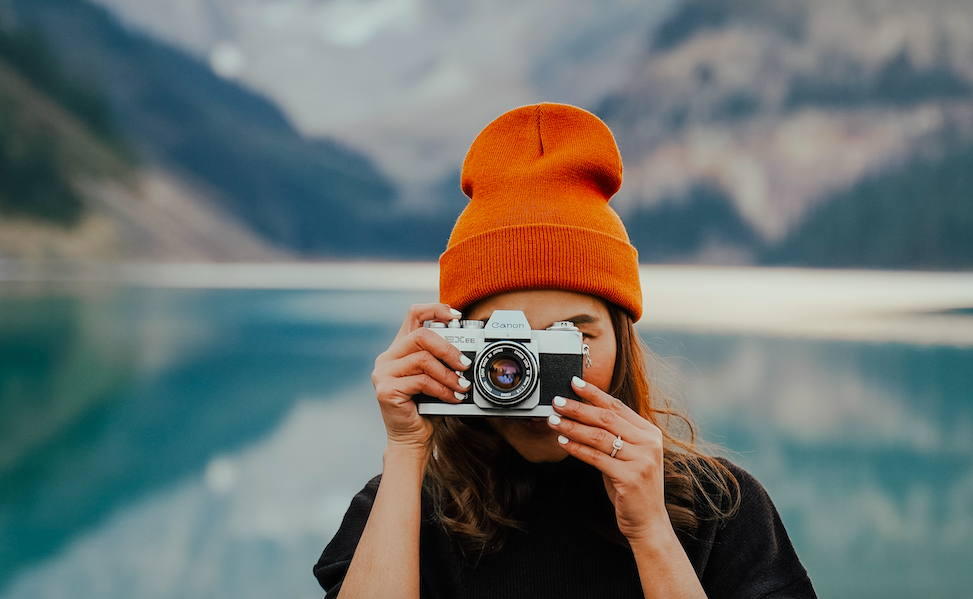
Image: Da Capture
Are SLR cameras easy to use?
SLR cameras are not easy to use. It’s that simple.
They are complex cameras with a range of different settings. The photographer will need to invest time and learn.
There are complex settings that will affect the final image. These include the ISO, shutter speed, and aperture settings.
No one can pick up an SLR camera and know how to use it. They will first need to be taught.
Thankfully, there are plenty of fantastic YouTube videos online. Making it accessible for the novice to learn.
A photographer will have an advantage when they have grasped the camera’s technicalities.
They will have incredible control over their image results.
SLR vs Rangefinder Cameras
These are the most common cameras on the market.
The rangefinder camera has no internal mirror. This makes them quieter and better for street or theatre photography.
No mirror also means the camera is less likely to shake.
The view through the viewfinder does not show what the camera will record.
This will be evident when taking up close shots.
Slower shutter speed means rangefinder cameras can not open their apertures as wide. This means you will have less control over the photo’s depth of field.
SLRs have an internal prism and mirror that reflects what the lens sees. This allows the photographer to view what the lens sees.
The photographer will be aware of the photo’s depth of field and the exact range of focus.
The SLR is a heavier and bulkier camera due to the components needed to make it.
Are DSLR Cameras Still Worth Buying in 2024?

Image: Julius Drost
Are you serious about photography? If the answer is yes, there are definite advantages to buying a Digital SLR.
You will not be limited to quick snaps where the camera decides the settings.
Phone cameras have come a long way in the past decade. Most are capable of taking a range of very professional-looking shots.
But they still don’t beat the control and intricacies that a DSLR can offer.
One advantage is the ability to swap lenses, interchanging between macro to long-range lenses during shoots.
The lenses you can use in conjunction with a digital DSLR are of the highest quality.
Another bonus is that DSLR Digital sensors give you a live view of what you are shooting.
There is the option to set a digital DSLR camera to automatic.
This allows you to get your feet wet in the field of professional photography.
But, if you intend to mostly use the camera set on its automatic setting it might not be worth the buck.
A great alternative is to use the semi-automatic setting, which allows the camera to take control of some settings. You stil have the last decision on the settings that are important to the shoot.
The camera will have you covered on the minor aspects of the camera settings, but you will have the final say on the setting you want to master.
It is worth noting that the automatic focus has a slight lag. This means the image will not be taken at the precise moment the shutter button is pressed.
That’s not great when you plan to snap a runner in action. But it isn’t a problem for long exposures.
All in all the conclusion is that DSLRs are worth buying in 2024, particularly for those who are interested in delving further into creative photography.
DSLR vs. Digital Cameras

Image: Bruno Cervera
What is the most crucial difference between a standard digital camera and a DSLR camera? It is the amount of control the photographer has over their camera.
If you like control over your camera settings you will love the DSLR camera.
The DSLR gives you the ability to manipulate the result of the image. You’re not restricted by lighting, distance, or movement factors.
A point-and-shoot camera is a great tool when you want quick shots. It is indispensable for catching candid moments.
When using a DSLR the photographer has the freedom to change lenses during shoots.
This gives the photographer the versatility to shoot macro shots, then later swap to shoot distant nighttime constellations, for example.
The DSLR sensor is wider than the standard digital camera, affecting its depth of field, field of view, and image quality.
DSLR cameras are not intuitive to use like standard digital cameras.
Knowing how to master a DSLR camera takes time. There is a lot to learn.
There is the option to set a digital DSLR camera to automatic.
This allows you to get your feet wet in the SLR camera world.
But, if you intend to only use the DSLR camera on its automatic setting it might not be worth the buck.
It is possible to use the semi-automatic setting.
The camera will have you covered on the minor aspects of the camera settings. You will have the final say on the setting you want to master.
Digital SLRs tend to be on the larger bulky side, whereas standard digital cameras are compact and light.
It’s not possible to pack DSLRs into a compact version, due to their more technical photographic components.
When you are looking for a camera that is light, quick, and easy to use, opt for a standard digital camera.
If you are keen to deeply embrace the world of photography and can invest the time to learn the ropes, opt for a Digital SLR.





